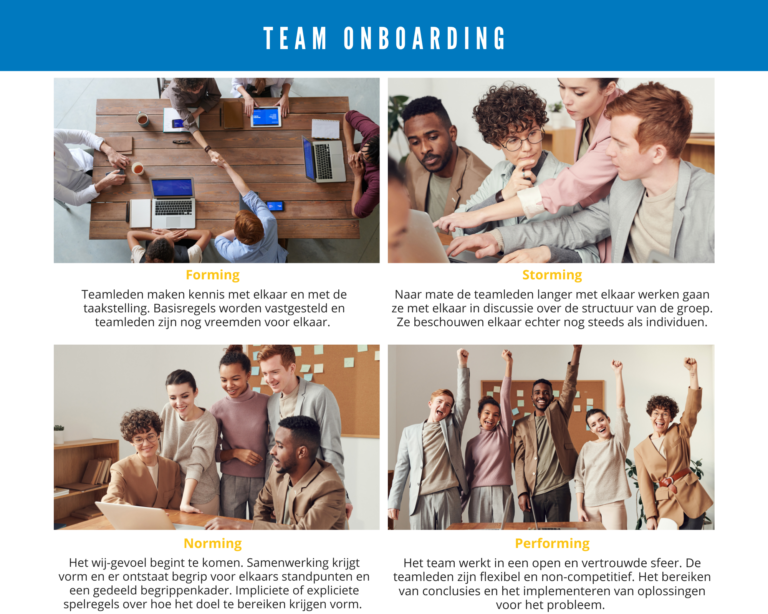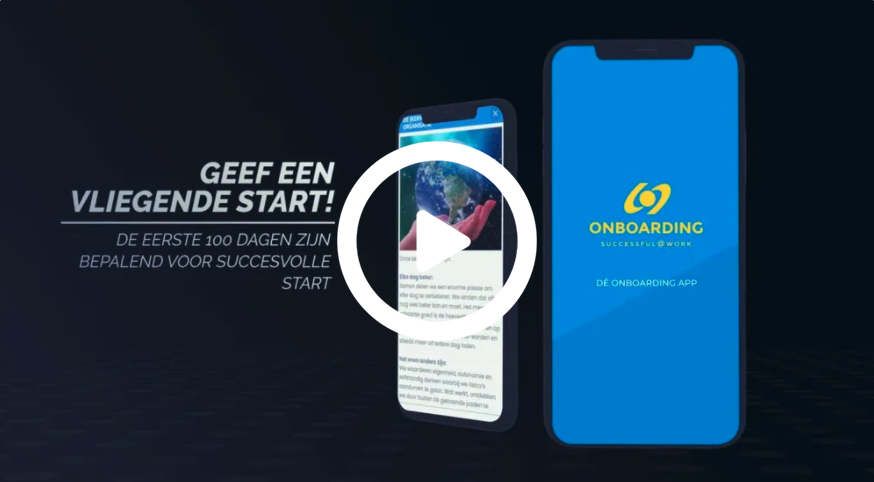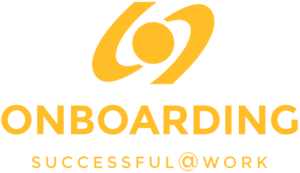The team is the foundation
The team forms the basis for proper onboarding and onboarding of new employees. Of course there is a central induction and onboarding program in which HR and the manager play an important role. But ultimately onboarding takes place within the team.
During the onboarding period, the new employee finds out how the team experiences the organization-wide core values and mission, vision and objectives. If the team does not endorse this and demonstrates it in exemplary behaviour, it will remove the bottom line from the onboarding and onboarding program. It becomes visible that the core values, mission, vision and objectives are not alive and are fulfilled in the workplace.
And this has unpleasant consequences.
Just a few numbers:
- 4% of employees leave on the first working day.
- 60% of employees consider leaving if the first month of onboarding does not go well
Engage the power of the team!
Of course, as an HR or manager, you can do everything yourself when it comes to giving a new employee a flying start.
But it is much more powerful to give the team the lead! Ask the team to take up and shape the onboarding and induction program.
The team knows better than anyone how dropping out or adding a team member has an impact on the dynamics within the team. And the team knows the conditions to land and be successful in the team and the organization.
They know the substantive expectations and make them concrete. In addition, the team explicitly makes time and space to get to know the new colleague better.
Team onboarding program
What does an onboarding and onboarding program created for the team look like? The focus of the program is on stimulating the connection between the new employee and the team.
The program below is based on Tuckman ‘s theory .

Forming
In this phase, team members get to know each other. The new employee gets to know the objectives of the team and the organization. Ground rules are established and team members are still strangers to each other. A characteristic of the new employees is that they are not yet involved in the team and the organization and that they do not have a clear objective.
Onboarding and onboarding program components are:
1. The team introduces itself
Of course, the new employee already gets to know the team during the preboarding. The team members introduce themselves. Who is who; without the new employee having to remember everyone in the 5-minute introduction round.
This preparation ensures that the new employee makes contact with the team members faster and easier. And that can be presented in different ways. For example, think of:
- A photo with name, position and reference to social media.
- A general proposal text with a short background, function and personal situation;
- Answering predefined questions about your work and the organization. Your expectations of the new employee, objectives, values
- A short 2-minute quiz in which you ask fun questions. Think about what you wanted to be when you grew up? Or what is your favorite snack?.
2. The team is actively involved
Of course, the team is part of the onboarding and onboarding program.
Actively involve the team in the new employee’s first working day. And asks them to also make contact and welcome the new employee.
3. Book time for onboarding and onboarding
Give the team time to handle the onboarding and onboarding of the new colleague. Also in the time registration system if you use it.
Instruct the team to focus in the first months on the link. The most important thing is that the new employee lands well in the team and start to feel at home. The work of the new employee comes second. That pays off later.
storming
The longer the team members work together, the more they discuss the structure of the group. However, they still consider each other as individuals. The new employee tries to find his place within the team. He/she looks at the cohesion within the team and the different agendas. There may also be clashes between team members and the new employee at this stage. People are looking for the new status quo together and are exploring boundaries together.
Onboarding and induction program components are:
1. What is more famous often becomes more fun
Help the new team member and team members learn more about each other. What is unknown is often not so much fun. What is more familiar often becomes more fun . Let the team have a fun conversation during an (online) meeting. For example, create an introductory exhibition with everyone’s favorite object.
Do you want to get more ideas? Or need help with the questions?
Google “teamwork game” and you will get a list of all kinds of games that you can order for a few tens and that will help you ask the right questions.
From Team Happiness, the Fun at Work Game to Open Heart the team game.
2. Positive end of the day
In the first week, have a team member rotate for ten minutes to discuss the positives of the day with the new employee. Consciously omit the negative. In this way, the new employee will go home with a good feeling. And of course this can be done online!
And agree with the team what is not going so well: Discuss this briefly as soon as the situation arises.
3. Create a team assignment
A team assignment is only realized by working together. It ensures that the team in varying compositions achieves a result together. This creates the opportunity for the new team member to get to know the team better and work with them.
It is important to conclude and evaluate these activities together. Please discuss the process. What went well?
The results will come later.
Norming
The we-feeling starts to come. Collaboration takes shape and a shared conceptual framework is created with more understanding for each other’s points of view. Implicit or explicit rules of the game about how to achieve the goal take shape. The new employee asks for clarification of objectives, confirmation of roles within the team, is assertive and identifies the strengths and weaknesses together with the team.
Onboarding and onboarding program components are:
1. Speaking Expectations
In addition to the hard team goals, discuss the goals that make working in the team more fun and enjoyable.
The new employee is included in these objectives by the team and the team expresses their expectations and the new employee indicates where he/she can add value.
2. Defining standards
When a new employee starts, it’s an opportunity to redefine the team’s standards.
The team is in the lead in this!
During a meeting, discuss and redefine the team’s standards. You do this, for example, by discussing what constitutes ” good cooperation and an excellent team “. There is a good chance that the team will behave accordingly. After all, who wouldn’t want to be a member of an “excellent team”? Do not ignore problems within the team, but make them negotiable. This sets the tone for interacting with each other.
A nice game form to discuss this topic is the Values and Norms Game. With this game, the team discusses cooperation, has a conversation about the organization and own values or discuss group norms. The latter is of course best suited to this theme.
performing
After going through the 3 previous phase, the new employee with the team eventually enters the performing phase and has successfully landed.
In this phase, the new employee works in an open and familiar atmosphere within the team. The other team members are flexible and non-competitive. Together they are focused on achieving and implementing solutions. They learn from each other, are creative and proud.
In short: enough handles to get the team started with the onboarding and induction program of the new employee!
And an excellent opportunity to further excel together.
Want to get started?
Tip: Would you like to get started with this?
This program is fully developed in the Successful@Work Onboarding App.











